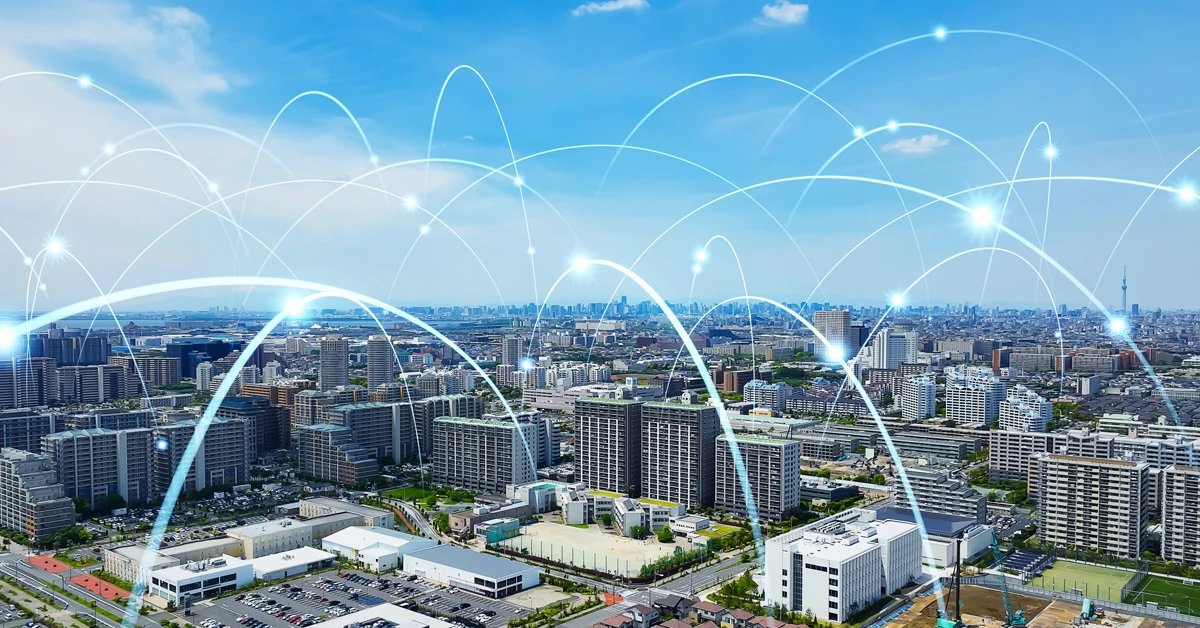

VLAN tagging in Ethernet switching equipment works by adding a special identifier to Ethernet frames, allowing switches to distinguish between different virtual LANs within the same physical network. This tagging helps in segregating network traffic, improving security, and optimizing network performance by directing data packets to their intended destinations based on VLAN membership.
MDU Internet Infrastructure Used Currently For Commercial Applications in 2024
The main difference between a managed and unmanaged Ethernet switch lies in the level of control and configuration options available. A managed switch allows for advanced features such as VLAN configuration, Quality of Service (QoS) settings, and monitoring capabilities, while an unmanaged switch operates with a plug-and-play approach, offering no customization options or remote management capabilities.
Multi-dwelling unit (MDU) residents no longer just expect a roof over their heads; they demand a reliable connected existence. Connectivity is key. The internet isnot only an indispensable utility, but one that MDU residents expect property owners to provide. This post explores why a reliable internet service is crucial for property management and the potential consequences of dead spots, slow speeds, and internet downtime.

Posted by on 2024-02-07
Greetings from the technical forefront of Dojo Networks, your community’s internet service provider. In this article, we embark on a technical journey to explore the intricacies of WiFi connectivity within your apartment complex. As WiFi ninjas, we'll delve into the advanced mechanisms and protocols underpinning our managed network, detail the disruptive influence caused by personal routers, and explain why a unified approach from all residents is essential for ensuring optimal internet performance.

Posted by on 2024-01-18
It’s in our DNA. It made us who we are. DojoNetworks got its start more than 20 years ago as an internet company selling retail direct to MDU residents. We sold against the big carriers… one customer at a time. To win over–and retain–customers who assumed the cable company was their only option, we had to provide better value and better service. No other service provider in our industry, no one, has this amount of direct-to-customer experience or success. The carriers were used to being the only game in town, and the other MSPs all started with bulk, knowing they had a captive audience. A few MSPs are just now starting to offer opt-in service and have a year or two of experience.

Posted by on 2023-10-30
Smart apartment buildings, equipped with cutting-edge technology and automation systems, are becoming the new standard in property management. In this comprehensive guide, we will explore the concept of smart apartment buildings, the benefits they offer to owners and tenants, how to build or upgrade to one, the key features and technologies involved, and the steps to plan and implement a smart apartment building strategy.

Posted by on 2023-09-25
Ethernet switching equipment can indeed support Power over Ethernet (PoE) for devices like IP cameras and VoIP phones. PoE technology enables the switch to deliver power to connected devices over the Ethernet cable, eliminating the need for separate power sources and simplifying installation and maintenance processes for network-connected devices.

Quality of Service (QoS) in Ethernet switching equipment is essential for prioritizing certain types of network traffic over others to ensure optimal performance for critical applications. By assigning different levels of priority to data packets based on their type or source, QoS helps in minimizing latency, packet loss, and jitter, ultimately enhancing the overall user experience on the network.
Spanning Tree Protocol (STP) plays a crucial role in preventing network loops in Ethernet switching equipment by identifying redundant paths and blocking them to maintain a loop-free topology. STP continuously monitors the network for changes in the topology and dynamically adjusts the forwarding paths to avoid loops, ensuring network stability and preventing broadcast storms that can lead to network congestion and performance issues.

Link Aggregation Control Protocol (LACP) in Ethernet switching equipment offers the benefit of combining multiple physical links into a single logical link, increasing bandwidth and providing redundancy for high-availability networks. By bundling multiple connections together, LACP enhances network performance, load balancing, and failover capabilities, improving overall network efficiency and reliability.
Ethernet switching equipment handles broadcast storms and prevents network congestion by implementing mechanisms such as broadcast storm control, which limits the amount of broadcast traffic allowed on the network. Additionally, switches use techniques like port mirroring, VLAN segmentation, and traffic prioritization through QoS to manage and control network traffic flow, preventing bottlenecks and ensuring smooth operation even during high-traffic periods.

When considering MDU internet installations, there are several environmental considerations that must be taken into account. These include the impact on local ecosystems, potential disruption to wildlife habitats, and the use of sustainable materials and practices. It is important to assess the carbon footprint of the installation process, as well as the long-term energy consumption of the internet infrastructure within the MDU. Additionally, proper waste management and recycling practices should be implemented to minimize environmental harm. By incorporating green technologies, such as energy-efficient equipment and renewable energy sources, MDU internet installations can reduce their environmental impact and contribute to a more sustainable future.
IPTV integration with internet services in MDUs involves the delivery of television content over an internet protocol network within multi-dwelling units. This integration allows residents to access a wide range of television channels, on-demand content, and interactive features through a single internet connection. By utilizing fiber-optic or high-speed internet connections, IPTV services can provide high-quality video streaming, seamless channel switching, and advanced features such as video-on-demand, time-shifted TV, and interactive applications. This integration enhances the overall entertainment experience for residents while also simplifying the management and delivery of television services within MDUs. Additionally, IPTV services can be easily bundled with internet and phone services, offering residents a comprehensive and cost-effective solution for their communication and entertainment needs.
When it comes to managing tenant turnovers in relation to MDU internet services, property managers typically work closely with internet service providers to ensure a smooth transition for new tenants. This process may involve coordinating the disconnection of services for outgoing tenants, setting up new accounts for incoming tenants, and scheduling installation appointments. Property managers may also communicate with tenants about the availability of internet services, troubleshooting any issues that may arise during the turnover process. By staying proactive and organized, property managers can minimize disruptions and ensure that tenants have access to reliable internet services throughout the turnover period.
Optical Transport Networks (OTNs) play a crucial role in enhancing the scalability of Multi-Dwelling Unit (MDU) internet infrastructure by providing high-capacity, low-latency, and reliable connectivity for a large number of users in a shared living space. By utilizing advanced wavelength division multiplexing (WDM) technology, OTNs can efficiently transport multiple data streams over a single fiber optic cable, increasing the overall bandwidth available to MDU residents. Additionally, OTNs support flexible network configurations, allowing for easy expansion and upgrades to accommodate growing demand for high-speed internet services in MDUs. The use of OTNs also helps reduce network congestion and improve overall performance, ensuring a seamless and reliable internet experience for all users in the MDU environment.
The implementation of IPv6 in MDU internet connectivity can have a significant impact on network performance and scalability. By transitioning to IPv6, MDUs can accommodate a larger number of connected devices within their network, as IPv6 offers a vastly expanded address space compared to IPv4. This allows for improved connectivity and better support for emerging technologies such as IoT devices, smart home systems, and high-bandwidth applications. Additionally, IPv6 implementation can enhance network security by providing built-in features such as IPsec for secure communication. Overall, the adoption of IPv6 in MDU internet connectivity can lead to a more efficient and future-proof network infrastructure.